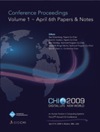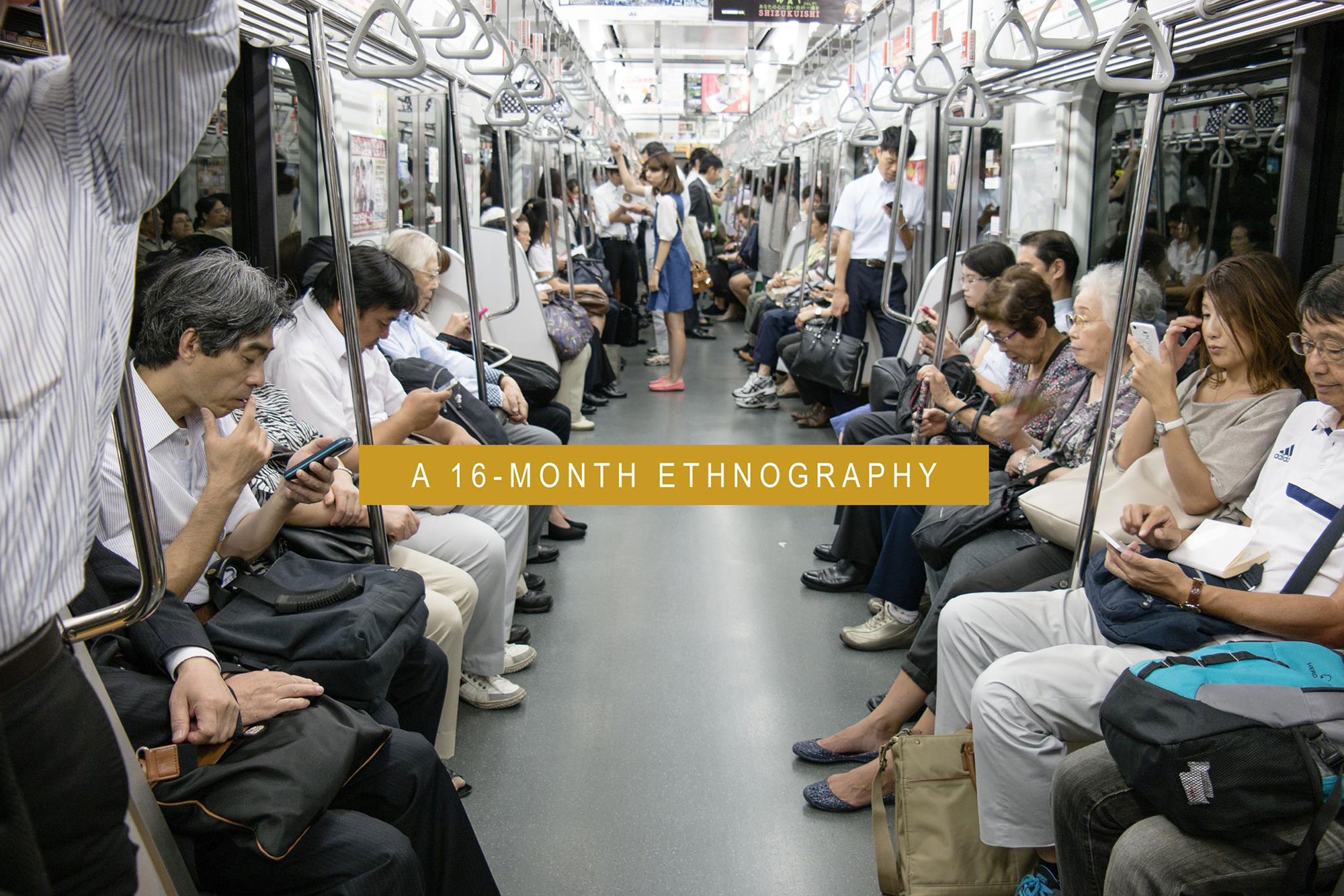A selection of CHI2009 papers
A comparative study of speech and dialed input voice interfaces in rural India
Neil Patel, Sheetal Agarwal, Nitendra Rajput, Amit Nanavati, Paresh Dave, Tapan S. Parikh
In this paper we present a study comparing speech and dialed input voice user interfaces for farmers in Gujarat, India. We ran a controlled, between-subjects experiment with 45 participants. We found that the task completion rates were significantly higher with dialed input, particularly for subjects under age 30 and those with less than an eighth grade education. Additionally, participants using dialed input demonstrated a significantly greater performance improvement from the first to final task, and reported less difficulty providing input to the system.
Sacred imagery in techno-spiritual design
Susan P. Wyche, Kelly E. Caine, Benjamin K. Davison, Shwetak N. Patel, Michael Arteaga, Rebecca E. Grinter
Despite increased knowledge about how Information and Communications Technologies (ICTs) are used to support religious and spiritual practices, designers know little about how to design technologies for faith-related purposes. Our research suggests incorporating sacred imagery into techno-spiritual applications can be useful in guiding development. We illustrate this through the design and evaluation of a mobile phone application developed to support Islamic prayer practices. Our contribution is to show how religious imagery can be used in the design of applications that go beyond the provision of functionality to connect people to the experience of religion.
A comparison of mobile money-transfer UIs for non-literate and semi-literate users
Indrani Medhi, S.N. Nagasena Gautama, Kentaro Toyama
Due to the increasing penetration of mobile phones even into poor communities, mobile payment schemes could bring formal financial services to the “unbanked”. However, because poverty for the most part also correlates with low levels of formal education, there are questions as to whether electronic access to complex financial services is enough to bridge the gap, and if so, what sort of UI is best.
In this paper, we present two studies that provide preliminary answers to these questions. We first investigated the usability of existing mobile payment services, through an ethnographic study involving 90 subjects in India, Kenya, the Philippines and South Africa. This was followed by a usability study with another 58 subjects in India, in which we compared non-literate and semi-literate subjects on three systems: text-based, spoken dialog (without text), and rich multimedia (also without text). Results confirm that non-text designs are strongly preferred over text-based designs and that while task-completion rates are better for the rich multimedia UI, speed is faster and less assistance is required on the spoken-dialog system.
Comparing semiliterate and illiterate users’ ability to transition from audio+text to text-only interaction
Leah Findlater, Ravin Balakrishnan, Kentaro Toyama
Multimodal interfaces with little or no text have been shown to be useful for users with low literacy. However, this research has not differentiated between the needs of the fully illiterate and semiliterate – those who have basic literacy but cannot read and write fluently. Text offers a fast and unambiguous mode of interaction for literate users and the exposure to text may allow for incidental improvement of reading skills. We conducted two studies that explore how semiliterate users with very little education might benefit from a combination of text and audio as compared to illiterate and literate users. Results show that semiliterate users reduced their use of audio support even during the first hour of use and over several hours this reduction was accompanied by a gain in visual word recognition; illiterate users showed no similar improvement. Semiliterate users should thus be treated differently from illiterate users in interface design.
StoryBank: mobile digital storytelling in a development context
David M. Frohlich, Dorothy Rachovides, Kiriaki Riga, Ramnath Bhat, Maxine Frank, Eran Edirisinghe, Dhammike Wickramanayaka, Matt Jones, Will Harwood
Mobile imaging and digital storytelling currently support a growing practice of multimedia communication in the West. In this paper we describe a project which explores their benefit in the East, to support non-textual information sharing in an Indian village. Local audiovisual story creation and sharing activities were carried out in a one month trial, using 10 customized cameraphones and a digital library of stories represented on a village display. The findings show that the system was usable by a cross-section of the community and valued for its ability to express a mixture of development and community information in an accessible form. Lessons for the role of HCI in this context are also discussed.
Designable visual markers
Enrico Costanza, Jeffrey Huang
Visual markers are graphic symbols designed to be easily recognised by machines. They are traditionally used to track goods, but there is increasing interest in their application to mobile HCI. By scanning a visual marker through a camera phone users can retrieve localised information and access mobile services.
One missed opportunity in current visual marker systems is that the markers themselves cannot be visually designed, they are not expressive to humans, and thus fail to convey information before being scanned. This paper provides an overview of d-touch, an open source system that allows users to create their own markers, controlling their aesthetic qualities. The system runs in real-time on mobile phones and desktop computers. To increase computational efficiency d-touch imposes constraints on the design of the markers in terms of the relationship of dark and light regions in the symbols. We report a user study in which pairs of novice users generated between 3 and 27 valid and expressive markers within one hour of being introduced to the system, demonstrating its flexibility and ease of use.
“When I am on Wi-Fi, I am fearless”: privacy concerns & practices in everyday Wi-Fi use
Predrag Klasnja, Sunny Consolvo, Jaeyeon Jung, Benjamin M. Greenstein, Louis LeGrand, Pauline Powledge, David Wetherall
Increasingly, users access online services such as email, e-commerce, and social networking sites via 802.11-based wireless networks. As they do so, they expose a range of personal information such as their names, email addresses, and ZIP codes to anyone within broadcast range of the network. This paper presents results from an exploratory study that examined how users from the general public understand Wi-Fi, what their concerns are related to Wi-Fi use, and which practices they follow to counter perceived threats. Our results reveal that while users understand the practical details of Wi-Fi use reasonably well, they lack understanding of important privacy risks. In addition, users employ incomplete protective practices which results in a false sense of security and lack of concern while on Wi-Fi. Based on our results, we outline opportunities for technology to help address these problems.
Predrag Klasnja, Sunny Consolvo, Jaeyeon Jung, Benjamin M. Greenstein, Louis LeGrand, Pauline Powledge, David Wetherall
Sharing empty moments: design for remote couples
Danielle Lottridge, Nicolas Masson, Wendy Mackay
Many couples are forced to live apart, for work, school or other reasons. This paper describes our study of 13 such couples and what they lack from existing communication technologies. We explored what they wanted to share (presence, mood, environment, daily events and activities), how they wanted to share (simple, lightweight, playful, pleasant interaction), and when they wanted to share (’empty moments’ such as waiting, walking, taking a break, waking up, eating, and going to sleep). ‘Empty moments’ provide a compelling new opportunity for design, requiring subtlety and flexibility to enable participants to share connection without explicit messages. We designed MissU as a technology probe to study empty moments in situ. Similar to a private radio station, MissU shares music and background sounds. Field studies produced results relevant to social science, technology and design: couples with established routines were comforted; characteristics such as ambiguity and ‘movable’ technology (situated in the home yet portable) provide support. These insights suggest a design space for supporting the sharing of empty moments.





“Sacred imagery in techno-spiritual design” is available online:
http://www.cc.gatech.edu/~spwyche/headlinesred/research_index.html#anchor3
Many, many of the papers are available for download online: http://dglmonitor.blogspot.com/2009/04/toc-service-chi-conference-on-human.html